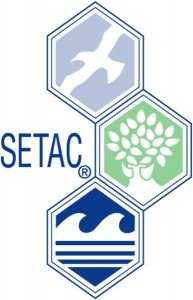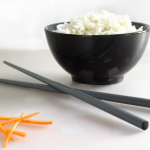Nov 4, 2014
 Evaluating hair samples for methylmercury (MeHg) concentrations can be particularly useful when performing human health studies, especially when trying to determine sources and timing of mercury exposure. Typical digestion procedures for MeHg determination in biological samples have been found to be inadequate for the preparation of hair. However, Brooks Rand Labs (BRL) performed a side-by-side comparison of sample preparation procedures, and the conclusions of this study confirmed that the nitric acid preparation method for MeHg analysis used by BRL worked well for human hair, as well as similar matrices such as fur and feathers. BRL used matrix spikes, certified reference materials, human hair, mammal fur, and bird feathers in the method validation.
Evaluating hair samples for methylmercury (MeHg) concentrations can be particularly useful when performing human health studies, especially when trying to determine sources and timing of mercury exposure. Typical digestion procedures for MeHg determination in biological samples have been found to be inadequate for the preparation of hair. However, Brooks Rand Labs (BRL) performed a side-by-side comparison of sample preparation procedures, and the conclusions of this study confirmed that the nitric acid preparation method for MeHg analysis used by BRL worked well for human hair, as well as similar matrices such as fur and feathers. BRL used matrix spikes, certified reference materials, human hair, mammal fur, and bird feathers in the method validation.
A recent publication compared several extraction methods for MeHg in human hair. It evaluated MeHg demethylation and inorganic Hg methylation artifact formation using species-specific isotope dilution and gas chromatography-inductively coupled plasma-mass spectrometry (GC-ICP-MS). It confirmed that a nitric acid preparation, similar to that used by BRL, was an appropriate method to use for hair and similar matrices. Contact us today to discuss how you can get the most accurate methylmercury data possible for your project.
Nov 4, 2014
 More than 2300 scientists, assessors, regulators, and managers will gather to share and discuss emerging research, regulatory developments, and the latest methodologies in environmental toxicology and chemistry at the SETAC North America 35th Annual Meeting. Tiffany Stilwater (BRL Client Services Manager), Elizabeth Madonick (BRL Technical Sales Specialist), and Ian Joslin (BRL Metals Chemist), will be heading up to Vancouver, BC, to attend this busy and exciting meeting being held November 9-13, 2014.
More than 2300 scientists, assessors, regulators, and managers will gather to share and discuss emerging research, regulatory developments, and the latest methodologies in environmental toxicology and chemistry at the SETAC North America 35th Annual Meeting. Tiffany Stilwater (BRL Client Services Manager), Elizabeth Madonick (BRL Technical Sales Specialist), and Ian Joslin (BRL Metals Chemist), will be heading up to Vancouver, BC, to attend this busy and exciting meeting being held November 9-13, 2014.
We don’t let our Metals Chemists out much, so come by introduce yourself to Ian on Tuesday morning (November 11th) as he presents his poster on “Potential Bias in Arsenic Speciation Results for Tissues Prepared by EPA Method 1632”. You can also come by the booth of our sister company, Brooks Rand Instruments (booth #218) to say hello, or contact us before the event to set up a meeting.
Oct 9, 2014
 Michelle Briscoe, the president and CEO of Brooks Rand Labs, gave a presentation on September 17th at the Department of Energy Consolidated Audit Program (DOECAP) Analytical Services Program (ASP) Workshop in Albuquerque entitled, “Metals Speciation as a Tool for Addressing Environmental Issues.” Brooks Rand Labs is an official DOECAP-audited laboratory, and is one of only eight companies in the nation that are both DOECAP-audited and DoD accredited. Contact us
Michelle Briscoe, the president and CEO of Brooks Rand Labs, gave a presentation on September 17th at the Department of Energy Consolidated Audit Program (DOECAP) Analytical Services Program (ASP) Workshop in Albuquerque entitled, “Metals Speciation as a Tool for Addressing Environmental Issues.” Brooks Rand Labs is an official DOECAP-audited laboratory, and is one of only eight companies in the nation that are both DOECAP-audited and DoD accredited. Contact us
Oct 9, 2014

Trace Clean Sampling is the implementation of EPA Method 1669, also known as “Clean Hands/Dirty Hands”, sample collection procedures in concurrence with EPA 1600-series analytical methods for low-level metals and metals speciation. During the development of these methods, the EPA found that one of the greatest difficulties in obtaining reliably accurate data for metals at low-level concentrations was due to sample contamination. Therefore, samples to be analyzed by any of the low-level metals 1600-series analytical methods must also be collected according to the procedures described in EPA Method 1669. EPA Method 1669 requires special procedures to minimize and monitor for contamination, including the use of ultra-clean pre-tested sample collection containers and other field-sampling equipment, a two-person sample collection procedure (“clean hands/dirty hands”), and the collection of field quality control samples (equipment blanks, field blanks, field duplicates, etc.).
For a detailed overview of EPA Method 1669 “Clean Hands/Dirty Hands” download our Environmental Sampling for Low Level Trace Metals informational brochure.
Find out more about our EPA Method 1669 “Clean Hands/Dirty Hands” clean sampling training and consulting provided by our experienced sampling consultants!
Sep 3, 2014
 Dr. Chris Eckley, an environmental scientist and geochemist with the US EPA, presented his latest research at Brooks Rand Labs on August 20th as part of BRL’s monthly seminar series for the professional development of our staff. Dr. Eckley’s presentation, Mercury Transport and Transformation at the Black Butte Mine Superfund Site, reported on some interesting findings related to methylmercury production in the Cottage Grove Reservoir in Oregon, which was the first body of water in Oregon to have a fish consumption public health advisory listed due to high mercury levels. Brooks Rand Labs has been involved in the mercury research being conducted at the Black Butte Mine and surrounding areas for many years. Learn more about BRL’s mercury and mercury speciation services, or request a quote today!
Dr. Chris Eckley, an environmental scientist and geochemist with the US EPA, presented his latest research at Brooks Rand Labs on August 20th as part of BRL’s monthly seminar series for the professional development of our staff. Dr. Eckley’s presentation, Mercury Transport and Transformation at the Black Butte Mine Superfund Site, reported on some interesting findings related to methylmercury production in the Cottage Grove Reservoir in Oregon, which was the first body of water in Oregon to have a fish consumption public health advisory listed due to high mercury levels. Brooks Rand Labs has been involved in the mercury research being conducted at the Black Butte Mine and surrounding areas for many years. Learn more about BRL’s mercury and mercury speciation services, or request a quote today!
Sep 3, 2014
It is commonly believed that dietary ingestion of one of the most toxic forms of mercury, methylmercury, is primarily due to eating fish. This is not necessarily the case in many areas of the world where rice is a staple food and the levels of methylmercury in rice have been found at potentially concerning levels. However, it is unclear whether methylmercury in rice is more toxic to humans than exposure through fish ingestion. Mercury contamination of rice has not yet had the same visibility and popularity as other food toxicity issues. To address this, Sarah Rothenberg (University of South Carolina), Lisamarie Windham-Myers (USGS), and Joel Creswell (Brooks Rand Instruments) have written a fascinating paper that consolidates and summarizes the most significant research on this topic in the past 30 years. To view the abstract and obtain a copy of this paper (PMID: 24972509), please click here.
Aug 4, 2014
 Here at Brooks Rand Labs, we have noticed many of our Canadian clients are working under new discharge permits with lower method detection limit (MDL) requirements for total mercury (Hg). Some water quality guidelines are even demanding site-specific detection limits as low as 0.10 ng/L for Hg. Brooks Rand Labs is able to comply with these new requirements, offering a 0.10 ng/L MDL for all clients (worldwide) for Hg analysis via EPA Method 1631E. There is no additional charge for this low-level MDL. If your project requires ultra-low level MDLs (for any analyte), contact us today!
Here at Brooks Rand Labs, we have noticed many of our Canadian clients are working under new discharge permits with lower method detection limit (MDL) requirements for total mercury (Hg). Some water quality guidelines are even demanding site-specific detection limits as low as 0.10 ng/L for Hg. Brooks Rand Labs is able to comply with these new requirements, offering a 0.10 ng/L MDL for all clients (worldwide) for Hg analysis via EPA Method 1631E. There is no additional charge for this low-level MDL. If your project requires ultra-low level MDLs (for any analyte), contact us today!
Jul 9, 2014
 Backlogged after the holiday weekend? Don’t worry! We have extended the deadline for our Intercomparison Study for Arsenic Speciation in Food — but don’t delay because you only have until July 15th to register! Use our registration form or contact us at 206-632-6206.
Backlogged after the holiday weekend? Don’t worry! We have extended the deadline for our Intercomparison Study for Arsenic Speciation in Food — but don’t delay because you only have until July 15th to register! Use our registration form or contact us at 206-632-6206.
Jun 10, 2014

Are your samples being properly prepared to avoid high bias due to interferences? EPA Method 1632A is the only EPA Method published for arsenic speciation in tissue samples, and it is usually the first choice for many regulatory-driven and government-funded projects. EPA Method 1632A describes two different digestion techniques that may be used for determination of dimethylarsinic acid (DMAs), and recent research conducted by Brooks Rand Labs has demonstrated that data produced by one of the digestion methods can be biased high for DMAs if the samples being analyzed contain significant amount of arsenobetaine (AsB), the most common form of arsenic found in most fin fish.
Come see Annie Carter, BRL’s VP of Operations, present on this topic (view the abstract) at the National Environmental Monitoring Conference (NEMC) in Washington D.C. on August 7th.
 Evaluating hair samples for methylmercury (MeHg) concentrations can be particularly useful when performing human health studies, especially when trying to determine sources and timing of mercury exposure. Typical digestion procedures for MeHg determination in biological samples have been found to be inadequate for the preparation of hair. However, Brooks Rand Labs (BRL) performed a side-by-side comparison of sample preparation procedures, and the conclusions of this study confirmed that the nitric acid preparation method for MeHg analysis used by BRL worked well for human hair, as well as similar matrices such as fur and feathers. BRL used matrix spikes, certified reference materials, human hair, mammal fur, and bird feathers in the method validation.
Evaluating hair samples for methylmercury (MeHg) concentrations can be particularly useful when performing human health studies, especially when trying to determine sources and timing of mercury exposure. Typical digestion procedures for MeHg determination in biological samples have been found to be inadequate for the preparation of hair. However, Brooks Rand Labs (BRL) performed a side-by-side comparison of sample preparation procedures, and the conclusions of this study confirmed that the nitric acid preparation method for MeHg analysis used by BRL worked well for human hair, as well as similar matrices such as fur and feathers. BRL used matrix spikes, certified reference materials, human hair, mammal fur, and bird feathers in the method validation.



 Dr. Chris Eckley, an environmental scientist and geochemist with the US EPA, presented his latest research at Brooks Rand Labs on August 20th as part of BRL’s monthly seminar series for the professional development of our staff. Dr. Eckley’s presentation,
Dr. Chris Eckley, an environmental scientist and geochemist with the US EPA, presented his latest research at Brooks Rand Labs on August 20th as part of BRL’s monthly seminar series for the professional development of our staff. Dr. Eckley’s presentation,  Here at Brooks Rand Labs, we have noticed many of our Canadian clients are working under new discharge permits with lower method detection limit (MDL) requirements for total mercury (Hg). Some water quality guidelines are even demanding site-specific detection limits as low as 0.10 ng/L for Hg. Brooks Rand Labs is able to comply with these new requirements, offering a 0.10 ng/L MDL for all clients (worldwide) for Hg analysis via
Here at Brooks Rand Labs, we have noticed many of our Canadian clients are working under new discharge permits with lower method detection limit (MDL) requirements for total mercury (Hg). Some water quality guidelines are even demanding site-specific detection limits as low as 0.10 ng/L for Hg. Brooks Rand Labs is able to comply with these new requirements, offering a 0.10 ng/L MDL for all clients (worldwide) for Hg analysis via  The US EPA Method 1669, Sampling Ambient Water for Trace Metals at EPA Water Criteria Levels, can be a complex and challenging method for those who are not experienced in “clean hands/dirty hands” sampling for low-level metals. Even for the most knowledgeable field samplers, every new site brings its own obstacles and the method has to be constantly modified to collect samples within the performance-based guidelines.
Taking one of our in-person
The US EPA Method 1669, Sampling Ambient Water for Trace Metals at EPA Water Criteria Levels, can be a complex and challenging method for those who are not experienced in “clean hands/dirty hands” sampling for low-level metals. Even for the most knowledgeable field samplers, every new site brings its own obstacles and the method has to be constantly modified to collect samples within the performance-based guidelines.
Taking one of our in-person 
